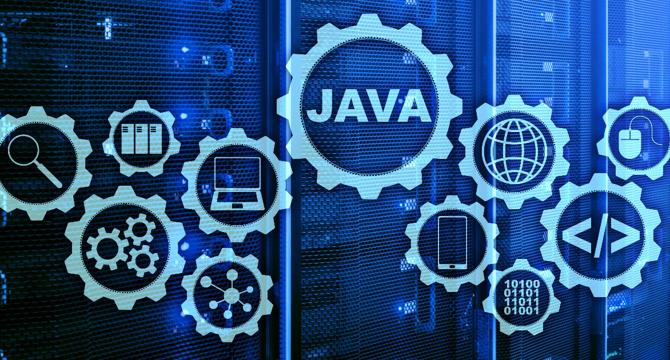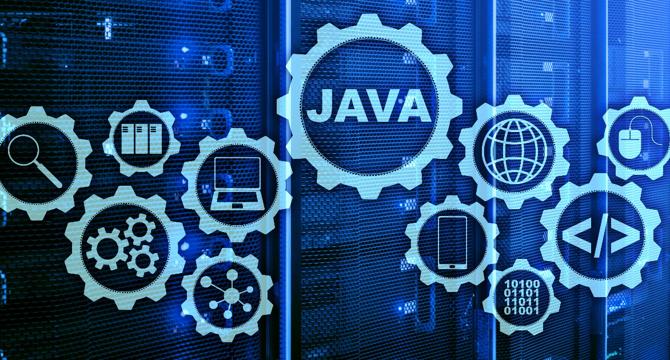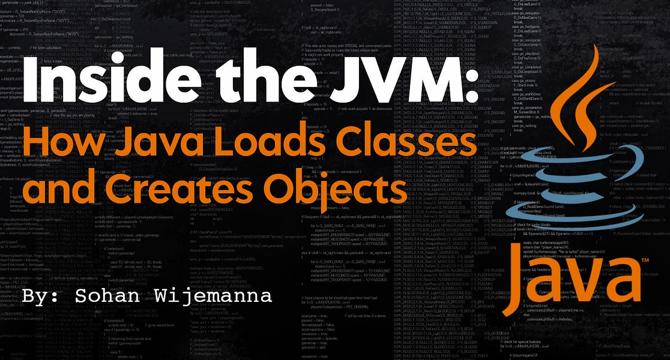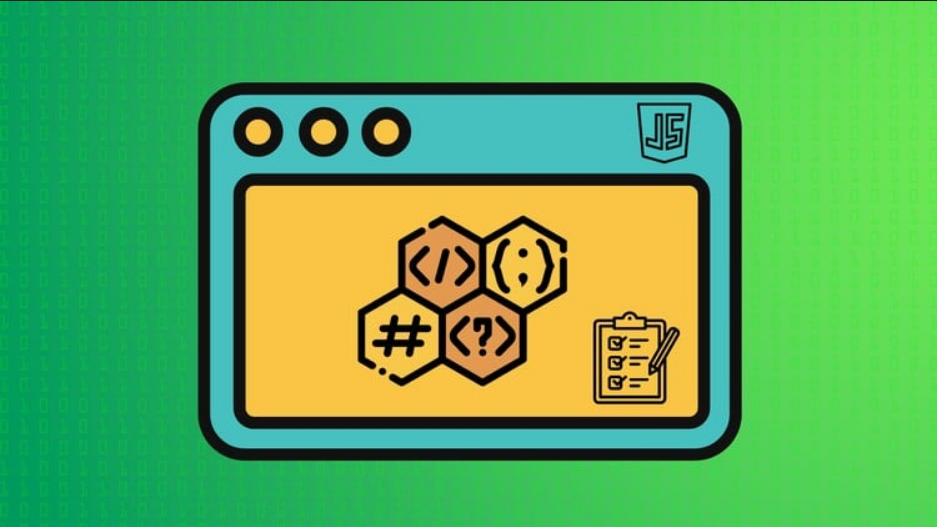Java
Dev
403

Image Credit: Dev
Announcing Azure Command Launcher for Java
- Optimizing JVM Configuration for Azure Deployments: Tuning the Java Virtual Machine (JVM) for cloud deployments is crucial for resource efficiency and cost-effectiveness. jaz: a new JVM launcher optimized for Azure, providing better default configurations for Java applications in containers and virtual machines.
- Conservative Defaults Lead to Underutilization of Resources: Default OpenJDK settings lead to underutilization of resources in cloud environments, requiring manual tuning. jaz offers optimized resource utilization, better performance on first deployment, and increased cost efficiency.
- How jaz works: jaz detects the cloud environment, workload type, and selects best-fit JVM options to launch the Java process with optimized flags, such as heap sizing, GC selection, and tuning.
- Example Usage: Instead of manual JVM tuning, use jaz for cloud-native and container workloads to benefit from battle-tested defaults, reduced memory waste, better performance, and no manual tuning required. jaz is currently available through a Private Preview.
Read Full Article
24 Likes
Infoq
350

Image Credit: Infoq
Java at 30: A Retrospective on a Language That Has Made a Big Impact
- Java programming language was introduced by Sun Microsystems at the Sun World conference in 1995, characterized as simple, object-oriented, distributed, and high-performance.
- Java, originally named Oak, was created to be architecture agnostic and object-oriented for consumer applications.
- Java has evolved over the past 30 years, overcoming challenges like being considered 'slow' or 'dead', with Oracle's recent initiatives focusing on making the language more accessible to students.
- To celebrate Java's 30th birthday, Oracle hosted a special event featuring discussions on language stewardship, community outreach, education, and the future of Java, highlighting its continued importance.
Read Full Article
21 Likes
Javacodegeeks
293

Image Credit: Javacodegeeks
Best Practices for Storing and Validating Passwords in Java (BCrypt, Argon2, PBKDF2)
- Java developers face the dilemma of choosing the best algorithm for storing and validating passwords. BCrypt, PBKDF2, and Argon2 are explored with examples in Spring Security integration.
- Storing passwords as plain text is a severe security risk, emphasizing the use of one-way hash functions with salting and multiple iterations to prevent brute-force and rainbow table attacks.
- BCrypt is widely favored in Spring Security due to its salting and work factor features. PBKDF2 offers more control over salt length, iterations, and hash algorithm, while Argon2 is modern and designed to resist both CPU and GPU cracking.
- For most web apps, BCrypt is recommended as the default choice, PBKDF2 is suitable for FIPS-compliant hashing or greater configuration flexibility, and Argon2 is advisable for high-security applications. Choose the appropriate algorithm based on your specific requirements.
Read Full Article
17 Likes
Infoq
377

Image Credit: Infoq
Java News Roundup: Java Turns 30, Hibernate ORM 7.0, Embabel, jaz, Open Liberty, Eclipse DataGrid
- This week's Java roundup for May 19th, 2025 features Java's 30th birthday celebration, Hibernate ORM 7.0 release, Open Liberty May 2025 edition, JobRunr 8.0 beta release, and the introductions of Embabel, jaz, and Eclipse DataGrid.
- OpenJDK ramps up for JDK 25 with JEP advancements including Compact Object Headers and Vector API, while jtreg 7.5.2 for JDK Regression Test Harness sees updates for test configurations.
- JDK 25 Build 24 early-access features bug fixes and developers are urged to report bugs via the Java Bug Database. Jakarta EE progress towards versions 11 and 12 are on schedule.
- Spring Framework teams deliver various GA releases and Spring Data plans to optimize repository startup times with Ahead-of-Time compilation in version 4.0.
- Microsoft Azure introduces jaz, a Java Command Launcher for resource management in cloud deployments. Open Liberty 25.0.0.5 includes bug fixes and enhancements for MicroProfile Telemetry 2.0.
- Quarkus MCP Server 1.2.0 supports streamable HTTP with plans for enhanced features. Hibernate ORM 7.0.0.Final and Hibernate Validator 9.0.0.Final releases bring new features and support for Jakarta Persistence 3.2.
- Rod Johnson introduces the Embabel Agent Framework for the JVM, and JobRunr 8.0.0 beta release offers new features for job scheduling. Eclipse DataGrid is a new open-source project aimed at in-memory data processing for distributed applications.
Read Full Article
22 Likes
Discover more
Medium
164

Data Migration in a Product-Based Environment Using Java & Python in Azure DevOps
- ETL-Based Migration involves Extract, Transform, Load using Apache Kafka, Spark, or custom Java/Python scripts.
- Database Replication & Sync can be achieved for PostgreSQL, MySQL, Azure SQL using Flyway, Liquibase, or Python ORM.
- Data Pipeline Automation can be done through Azure Data Factory or Python-based ETL jobs integrated with Azure DevOps.
- Cloud Storage Transfer includes moving blobs and structured datasets via Azure Storage SDK using Java/Python.
Read Full Article
9 Likes
Medium
240

Image Credit: Medium
Inside the JVM: How Java Loads Classes and Creates Objects
- The blog delves into how Java loads classes and creates objects inside the JVM, focusing on the processes involved.
- Java performs lazy class loading in the JVM, with triggers causing classes to be loaded when needed.
- The class loader locates and loads .class files into the method area of the JVM.
- Java ClassLoader subsystem follows a parent delegation model for secure and consistent loading.
- After loading into memory, classes undergo essential steps before being ready for use.
- Object creation in Java involves mechanisms like new keyword and cloning.
- During object creation, memory is allocated in the heap for all instance members.
- Constructor invocation involves stack frame allocation, assigning arguments, and superclass constructor chain.
- Instance initializers and variable initializers are copied into constructors for proper initialization.
- The JVM returns the reference of the newly created object after constructor execution.
Read Full Article
14 Likes
Medium
383

Image Credit: Medium
Coming Soon — New Java 1Z0–830 Practice Course
- A new Java 1Z0–830 Practice Course is in development with updated scenarios and more practice questions to help master the certification.
- The current bestselling Java SE 21 Developer 1Z0–830 Practice Tests course on Udemy is highly recommended for preparation.
- Enrolling in the current course can assist in preparing for the Oracle Certified Professional: Java SE 21 Developer exam.
- A discount code 'MEMORIALDAY' is available to get the course for $9.9 on Udemy, alongside a special offer on Java Interview books with code 'friends50' for a 50% discount until the weekend.
Read Full Article
23 Likes
Dev
22

Image Credit: Dev
Day 2 of Java Mastery: Understanding Different main Method Syntaxes in Java for Beginners
- Java allows several valid variations of the main method syntax for beginners to understand.
- Valid main method syntaxes in Java include using standard array syntax, old-school array syntax, varargs, and custom parameter names.
- Invalid main method syntaxes include missing static or public, using wrong parameter types, as the JVM specifically expects public static void main(String[] args).
- While overloading the main method is possible, only the correct one (String[] args) will run by default in Java.
Read Full Article
1 Like
The Register
236

Image Credit: The Register
How Java changed the development landscape entirely as code turns 30
- Java programming language celebrates its 30th anniversary, introducing Write Once, Run Anywhere concept, which paved the way for open source in the enterprise.
- Initially named 'Oak' by James Gosling at Sun Microsystems in the early 1990s, Java shifted its focus to the World Wide Web and became immensely popular.
- Despite facing challenges and alternatives over the years, Java remained a top 10 language in 2024 and continues to be a crucial part of modern software development.
- Oracle's acquisition of Sun led to licensing changes, but Java's ubiquity ensured the availability of alternatives and a strong community support over its three decades.
Read Full Article
14 Likes
Javarevisited
383

Image Credit: Javarevisited
Top 6 Free Data Structure and Algorithm Courses for Java and C Programmers
- Good knowledge of data structure and algorithm is essential for programmers to excel in their careers and perform well on the job.
- Understanding essential data structures like arrays, strings, linked lists, trees, and maps, as well as advanced structures like Tries and AVL trees, is crucial.
- Knowing when to use the appropriate data structure and being able to calculate the CPU and memory costs of code are key skills for programmers.
- Using the right data structure can significantly enhance the performance of an algorithm.
Read Full Article
23 Likes
Tech Radar
398

Image Credit: Tech Radar
The programming language that defines the internet is 30 years old today: Happy birthday, Java
- Java, turning 30, remains a widely used programming language prioritizing stability and backward compatibility.
- Introduced in 1995 by Sun Microsystems with the concept of 'write once, run anywhere.'
- Java's success is attributed to its Java Virtual Machine (JVM) enabling platform independence.
- The language's continuous relevance is reflected in its utility, longevity, and adaptability.
- Java's emphasis on backward compatibility and smooth portability contributed to its success.
- Java's cautious evolution includes late additions like lambda expressions and gradual feature enhancements.
- Java's role in enterprise systems is strengthened by its compatibility and minimal need for code rewriting.
- Java's evolution from Java 2 to the recent Java 17 LTS release demonstrates modernization and adaptability.
- Java's compatibility with cloud computing, Java in the cloud, and its ventures into machine learning showcase its continued relevance.
- Projects like GraalVM and Panama expand Java's capabilities in cloud-native applications, machine learning, and high-performance computing.
Read Full Article
23 Likes
Dev
437

Image Credit: Dev
Why Learn Java Full Stack as an International Student in North America
- Mastering Java full stack is effective for international students pursuing tech careers in North America due to its stability, scalability, and robust ecosystem.
- Learning Java full stack equips students with backend development skills and understanding of modern web application architecture.
- International students have a smooth transition to advanced frameworks like Spring Boot and gain experience in building RESTful APIs and deploying applications using cloud services.
- Building complete portfolio projects with full Java stack experience helps international students stand out in job interviews and provides them with versatile opportunities in the job market.
Read Full Article
26 Likes
Medium
31

From Naive to Optimal: Mastering Power Functions in Java
- Different approaches for solving power functions in Java were discussed, highlighting the importance of performance optimization.
- Recursive approach had time complexity of O(n) and space complexity of O(n) due to call stack, leading to performance issues for large values of n.
- Binary exponentiation reduced time complexity to O(log n) by leveraging mathematical insights, providing significant performance improvements.
- Fast exponentiation algorithm was recommended for optimal performance, especially for handling large exponents, with a comparison provided for 2^1000.
Read Full Article
1 Like
Dzone
183

Image Credit: Dzone
Chat With Your Knowledge Base: A Hands-On Java and LangChain4j Guide
- Retrieval-augmented generation (RAG) enhances LLMs by providing relevant information from specific knowledge sources before generating responses.
- The article serves as a Java guide for creating an application to interact with a custom knowledge base using LangChain4j.
- RAG involves retrieving relevant knowledge, augmenting the query, and then generating informed responses.
- LangChain4j simplifies LLM integration in Java, handling tasks like connecting to LLM providers and managing prompts.
- The demonstration simulates a knowledge base about technical components, faults, procedures, stored in text files.
- The tutorial covers setting up the project with Maven, creating knowledge base files, and ingesting data for the RAG pipeline.
- The Java code processes text files, scales documents into segments, embeds them for semantic meaning, and stores them for retrieval.
- Additionally, the article provides a guide for building an interactive chat interface using AiServices and LangChain4j components.
- Key components include ChatLanguageModel, ContentRetriever, ChatMemory, and the AiService factory.
- The final application allows users to query and receive answers based on the ingested knowledge, showcasing the RAG process.
- By following the steps outlined, developers can create AI assistants that leverage domain-specific data for accurate responses.
Read Full Article
11 Likes
Medium
44

Java 7 vs Java 8 and Beyond: A Complete Comparison for Modern Developers
- Java 7 focused on performance improvements and simplifying coding syntax with features like Try-with-resources and Multicatch Exception Handling.
- Java 8 introduced functional programming, Lambda Expressions, Stream API, Optional class, Default and Static Methods in Interfaces, and modernized syntax.
- Major features from Java 9 to Java 21 include New HTTP Client, Records, Pattern Matching, Long-Term Support, Sealed Classes, Virtual Threads, and more.
- Transition tips include updating dependencies, using streams and lambdas, adopting var and records, and upgrading to newer Java versions for improved security and performance.
Read Full Article
2 Likes
For uninterrupted reading, download the app